Risk e-Learning Webinar Series: Session I - Data Sharing Tools, Workflows, and Platforms
Sponsored by: NIEHS Superfund Research Program
Archived: Monday, May 17, 2021
Risk e-Learning Webinar Series: Session I - Data Sharing Tools, Workflows, and Platforms
2021-05-17
NIEHS Superfund Research Program
The NIEHS Superfund Research Program (SRP) is hosting a Risk e-Learning webinar series focused on SRP-funded data science projects that are enhancing the integration, interoperability, and reuse of data. With these supplements, the SRP encourages data sharing among its grantees to accelerate scientific discoveries, stimulate new collaborations, and increase scientific transparency and rigor.
The first session will introduce tools, strategies, workflows, and platforms developed by SRP researchers to organize existing data obtained from measuring contaminants in an array of environmental media to facilitate interoperability. These strategies were developed to enable researchers to reuse the data to better characterize and understand contaminants present in the environment. We will also hear about the U.S. Environmental Protection Agency's (U.S. EPA's) CompTox Chemicals Dashboard, a compilation of information from many sites and databases developed to organize chemical data and address data gaps.
Brittany Saleeby, trainee at the University of California, Davis (UC-Davis) SRP Center, will discuss a UC-Davis and Duke research collaboration focused on how disparate sources of high-resolution mass spectrometry data can be combined to harmonize approaches for non-targeted environmental analysis. Post-processing programs used by each lab for non-targeted mass spectrometry data resulted in dissimilar numbers of molecular features. The project’s current focus is describing the similarities and differences between analysis results and describing the chemical space that each data process is expected to recognize.
Benjamin Bostick, Ph.D., of the Columbia University SRP Center, and Tracy Punshon, Ph.D., of the Dartmouth College SRP Center, will describe the development of a biological elemental imaging database that brings FAIR principles (Findable, Accessible, Interoperable and Reusable) to an archive of elemental maps collected from model plants (Arabidopsis and rice) at multiple synchrotron facilities in the US over a 10-year period. They use an example of integrated, interoperable datasets to find parallels in the chemical processes affecting drinking water quality across widely disparate communities in Bangladesh, Vietnam and the Northern Plains region of the US.
Antony Williams, Ph.D., of the Center for Computational Toxicology and Exposure in the Office of Research and Development at the U.S. EPA, The US EPA CompTox Chemicals Dashboard website for Environmental Science Data, will focus on the CompTox Chemicals Dashboard. This free website provides access to data for ~900,000 chemicals. These data include property data, in vivo and in vitro toxicity data, exposure information and flexible searches for one chemical at a time or many thousands. This presentation will provide a basic overview of the Dashboard, its capabilities, and how it can help environmental scientists quickly source relevant data.
Accessibility, Recording, and Content Disclaimer
Rehabilitation Act Notice for Reasonable Accommodation
It is EPA's policy to make reasonable accommodation to persons with disabilities wishing to participate in the agency's programs and activities, pursuant to the Rehabilitation Act of 1973, 29 U.S.C. 791. Any request for accommodation should be made to Mali Velasco Delgado at 919-794-4708 or mali.velascodelgado@nih.gov, preferably one week or more in advance of the webinar, so that EPA will have sufficient time to process the request. EPA would welcome specific recommendations from requestors specifying the nature or type of accommodation needed. Please note that CLU-IN provides both alternate phone call-in options and closed captioning for all webinars, and requests for these specific accommodations are not necessary.
Webinar Recording
By participating in this CLU-IN webinar, you automatically agree to authorize recording of audio and visual content presented during this live event and consent to subsequent use of this recording in the public domain by the U.S. Environmental Protection Agency. This recording may include questions, comments and poll responses provided by you during the live event in addition to your name, voice, image or likeness. This recording will be made available after the conclusion of the live event as part of the CLU-IN webinar archives, and will remain available indefinitely. If you do not wish to consent to the recording, please do not join the live event, and contact Jean Balent at 202-566-0832 or balent.jean@epa.gov to discuss your concerns.
Content Disclaimer
This webinar is intended solely to provide information to the public. The views and opinions expressed as part of this webinar do not necessarily state or reflect those of the U.S. Environmental Protection Agency. It is not intended, nor can it be relied upon, to create any rights enforceable by any party in litigation with the United States, or to endorse the use of products or services provided by specific vendors. With respect to this webinar, neither the United States Government nor any of their employees, makes any warranty, express or implied, including the warranties of merchantability and fitness for a particular purpose, or assumes any legal liability or responsibility for the accuracy, completeness, or usefulness of any information, apparatus, product, or process disclosed, or represents that its use would not infringe privately owned rights.
Presenters:
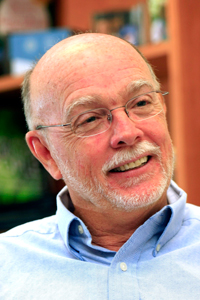 William Suk, Ph.D., M.P.H., Superfund Research Program, National Institute of Environmental Health Sciences (suk@niehs.nih.gov or 984-287-3325)
William Suk, Ph.D., M.P.H., Superfund Research Program, National Institute of Environmental Health Sciences (suk@niehs.nih.gov or 984-287-3325)
William Suk, Ph.D., M.P.H., is director of both the Superfund Research Program (SRP) and the Hazardous Substances Research Branch in the NIEHS Division of Extramural Research and Training. Suk has served as director of the SRP, a program established by Congress as part of the reauthorization of Superfund in 1986, since its inception. The SRP fosters interdisciplinary research approaches to address the problems associated with potentially hazardous environmental exposures. His affiliation with a number of organizations and committees include: Roundtable on Environmental Health Sciences, Research, and Medicine, Institute of Medicine, National Academy of Sciences; International Advisory Board of the Chulabhorn Research Institute, Bangkok, Thailand; and World Health Organization Consultation on Scientific Principles and Methodologies for Assessing Health Risks in Children Associated with Chemical Exposures. He is also a member of a number of trans-NIH committees. He received his Ph.D. in microbiology from the George Washington University Medical School, and his master's in public health in health policy from School of Public Health at the University of North Carolina at Chapel Hill.
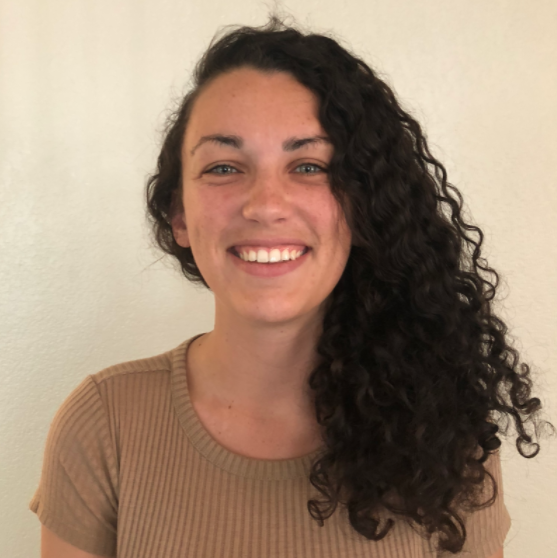 Brittany Saleeby, University of California, Davis (bsaleeby@ucdavis.edu)
Brittany Saleeby, University of California, Davis (bsaleeby@ucdavis.edu)
Brittany Saleeby is a current trainee at the University of California, Davis SRP Center. She has a B.S. and an M.S. in Chemistry from the University of North Carolina, Wilmington (UNCW). In her time at UNCW, she was inspired by the idea of using art for education and outreach. She was integral to helping with up-cycled art galleries for the Plastic Ocean Project, setting up local compost facilities, and filled various teaching positions around UNCW and the wider Wilmington community. Her academic goal is to find ways to systematically screen contaminants in water, sediment, and plants as a way to address human health concerns that ultimately stem as a result of acute or chronic exposure. For her master's thesis and publication, which focused on non-target mass spectrometry techniques to analyze environmental contaminants, she and her team discovered a group of novel PFAS in drinking water and sediment from a nearby chemical manufacturer. They also discovered these compounds in rainwater. This discovery shifted the way the state looked for these PFAS and represented a new vector for contamination. Along with her passion for environmental policy making, she believes the importance of scientific literacy and critical thinking has become a priority for future generations, and she hopes to help prepare the next environmental activist, enthusiasts, and leaders.
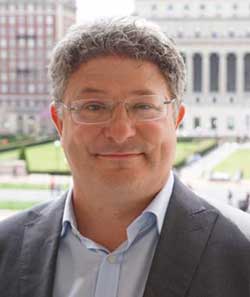 Benjamin Bostick, Ph.D., Columbia University (bb2461@columbia.edu or 845-365-8659)
Benjamin Bostick, Ph.D., Columbia University (bb2461@columbia.edu or 845-365-8659)
Benjamin Bostick, Ph.D., is an associate research professor at the Lamont-Doherty Earth Observatory at Columbia University. He leads a project at the Columbia SRP Center focused on enhancing remediation of U.S. arsenic-contaminated sites. His fields of interest include soils, aqueous geochemistry, sediment redox cycling, biogeochemistry, mineralogy, and applications of spectroscopy in earth sciences. Bostick earned his Ph.D. from Stanford University.
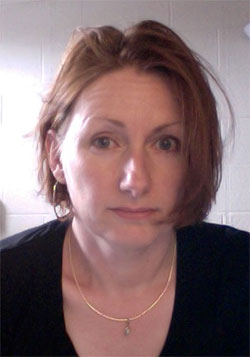 Tracy Punshon, Ph.D., Dartmouth College (tracy.punshon@dartmouth.edu or 603-646-1037)
Tracy Punshon, Ph.D., Dartmouth College (tracy.punshon@dartmouth.edu or 603-646-1037)
Tracy Punshon, Ph.D., is a Research Assistant Professor in the Biological Sciences Department of Dartmouth College. Tracy joined the Dartmouth Superfund Research Program as a trainee in 2005, and remains part of the program in the Trace Element Analysis Core facility. Tracy has over 15 years experience with elemental mapping, working closely with three of the US synchrotron facilities, and routinely using Laser Ablation ICP-MS.
 Antony Williams, Ph.D., U.S. EPA (williams.antony@epa.gov or 919-541-1033)
Antony Williams, Ph.D., U.S. EPA (williams.antony@epa.gov or 919-541-1033)
Antony J. Williams, Ph.D., joined the Center for Computational Toxicology and Exposure in the Office of Research and Development at the US EPA in May 2015. He is a cheminformatician focused on the delivery of the center's data to the scientific community via the CompTox Chemicals Dashboard. His interests include the aggregation and curation of chemical data, development of models to support physicochemical property prediction and development of software approaches to support non-targeted analysis. He has over two decades of experience in cheminformatics and chemical information management with a focus on internet-based projects to deliver free-access community-based chemistry websites.
Moderators:
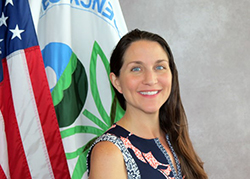 Jean Balent, U.S. EPA Technology Innovation and Field Services Division (balent.jean@epa.gov or 202-566-0832)
Jean Balent, U.S. EPA Technology Innovation and Field Services Division (balent.jean@epa.gov or 202-566-0832)
Ms Balent is on the staff of the EPA's Technology Innovation and Field Services Division where she has worked to collect and disseminate hazardous waste remediation and characterization information since 2003. Ms Balent manages the Clean Up Information Network website and actively supports online communication and collaboration resources available to EPA. She formerly worked with the US Army Corps of Engineers Environmental Engineering Division in the Buffalo District. Ms Balent was also a member of the SUNY-Buffalo Groundwater Research Group where she constructed and tested large scale models of groundwater flow. Ms Balent has also conducted research relating to the Great Lakes, environmental remediation, and brownfields re-development. She holds a Bachelor's degree in environmental engineering from SUNY-Buffalo and a Master's degree in Information Technology from AIU.
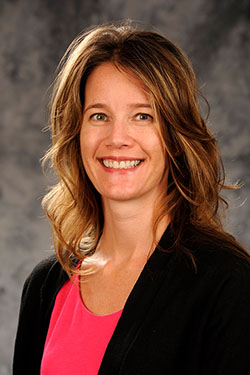 Michelle L. Heacock, Ph.D., NIEHS Superfund Research Program (heacockm@niehs.nih.gov)
Michelle L. Heacock, Ph.D., NIEHS Superfund Research Program (heacockm@niehs.nih.gov)
Michelle Heacock, Ph.D., is currently serving as the acting branch chief of the Hazardous Substances Research Branch, and is a health science administrator where she oversees Superfund Research Program (SRP) grants that span basic molecular mechanisms of biological responses from exposures to hazardous substances, movement of hazardous substances through environmental media, detection technologies, and remediation approaches. Dr. Heacock received her doctorate from Texas A&M University for her work on the interplay between DNA repair proteins and telomeres. Her postdoctoral work was conducted at NIEHS where she studied the DNA repair pathway, base excision repair. She has been with the NIEHS since 2007.
Webinar Slides and References:
-
 Slide Presentation for William Suk, Ph.D., M.P.H., NIEHS (1.43MB/PDF)
Slide Presentation for William Suk, Ph.D., M.P.H., NIEHS (1.43MB/PDF)
-
 Slide Presentation for Brittany Saleeby; University of California, Davis (1.49MB/PDF)
Slide Presentation for Brittany Saleeby; University of California, Davis (1.49MB/PDF)
-
 Slide Presentation for Benjamin Bostick, Ph.D.; Columbia University (4.53MB/PDF)
Slide Presentation for Benjamin Bostick, Ph.D.; Columbia University (4.53MB/PDF)
-
 Slide Presentation for Tracy Punshon, Ph.D.; Dartmouth College (1.32MB/PDF)
Slide Presentation for Tracy Punshon, Ph.D.; Dartmouth College (1.32MB/PDF)
-
 Slide Presentation for Antony Williams, Ph.D.; U.S. EPA (1.23MB/PDF)
Slide Presentation for Antony Williams, Ph.D.; U.S. EPA (1.23MB/PDF)
Webinar Slides and References:
-
 Slide Presentation for William Suk, Ph.D., M.P.H., NIEHS (1.43MB/PDF)
Slide Presentation for William Suk, Ph.D., M.P.H., NIEHS (1.43MB/PDF)
-
 Slide Presentation for Brittany Saleeby; University of California, Davis (1.49MB/PDF)
Slide Presentation for Brittany Saleeby; University of California, Davis (1.49MB/PDF)
-
 Slide Presentation for Benjamin Bostick, Ph.D.; Columbia University (4.53MB/PDF)
Slide Presentation for Benjamin Bostick, Ph.D.; Columbia University (4.53MB/PDF)
-
 Slide Presentation for Tracy Punshon, Ph.D.; Dartmouth College (1.32MB/PDF)
Slide Presentation for Tracy Punshon, Ph.D.; Dartmouth College (1.32MB/PDF)
-
 Slide Presentation for Antony Williams, Ph.D.; U.S. EPA (1.23MB/PDF)
Slide Presentation for Antony Williams, Ph.D.; U.S. EPA (1.23MB/PDF)
Additional Resources:
Publications
HOT OFF THE PRESS "Enabling High-Throughput Searches for Multiple Chemical Data Using the U.S. EPA CompTox Chemicals Dashboard"
The FAIR Guiding Principles for scientific data management and stewardship
Sharing SRP data to reduce environmentally associated disease and promote transdisciplinary research
- EPA CompTox Chemical Dashboard related
- Generalized Read-Across (GenRA): workflow in the EPA CompTox Chemicals Dashboard
- OPERA models for predicting physicochemical properties and environmental fate end points
- Evidence for Cross Species Extrapolation of Mammalian-Based HTS Assay Results
- A Chemical Category-Based Prioritization Approach for Selecting 75 Per-and Polyfluoroalkyl Substances (PFAS) for Tiered Toxicity and Toxicokinetic Testing
- An ecotoxicological view on neurotoxicity assessment
- Open-source QSAR models for pKa prediction using multiple machine learning approaches
- Mass Spectrometry and targeted/Non-Targeted Analysis
- Using prepared mixtures of ToxCast chemicals to evaluate non-targeted analysis (NTA) methods
- "EPA's non-targeted analysis collaborative trial (ENTACT): Genesis, design, and initial findings"
- "MS-Ready" structures for non-targeted high-resolution mass spectrometry screening studies
- Integrating tools for non-targeted analysis research & chemical safety evaluations at the US-EPA
- Revisiting Five Years of CASMI Contests with EPA Identification Tools
- Using the U.S. EPA CompTox Chemicals Dashboard to interpret targeted and non-targeted GC-MS analyses from human breath and other biological media
If you have a suggested topic or idea for a future CLU-IN internet seminar, please contact:
Technology Integration and Information Branch
PH: 202-566-0832 | Email: balent.jean@epa.gov
Technology Integration and Information Branch
PH: 202-566-0875 | Email: adam.michael@epa.gov




